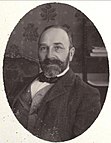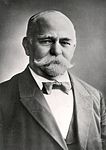
The Free Democratic Party is a liberal and classical liberal political party in Germany. The FDP is led by Christian Lindner.

The Democratic-Republican Party was an American political party formed by Thomas Jefferson and James Madison around 1792 to oppose the centralizing policies of the new Federalist Party run by Alexander Hamilton, who was Secretary of the Treasury and chief architect of George Washington's administration. From 1801 to 1825, the new party controlled the presidency and Congress as well as most states during the First Party System. It began in 1791 as one faction in Congress and included many politicians who had been opposed to the new constitution. They called themselves Republicans after their political philosophy, republicanism. They distrusted the Federalist tendency to centralize and loosely interpret the Constitution, believing these policies were signs of monarchism and anti-republican values. The party splintered in 1824, with the faction loyal to Andrew Jackson coalescing into the Jacksonian movement, the faction led by John Quincy Adams and Henry Clay forming the National Republican Party and some other groups going on to form the Anti-Masonic Party. The National Republicans, Anti-Masons, and other opponents of Andrew Jackson later formed themselves into the Whig Party.

The Green Party of England and Wales is a green, left-wing political party in England and Wales. Headquartered in London, since September 2018, its co-leaders are Siân Berry and Jonathan Bartley. The Green Party has one representative in the House of Commons, one in the House of Lords, and three in the European Parliament. In addition, it has various councillors in UK local government and two members of the London Assembly.

Pauline Hanson's One Nation is a nationalist, right-wing populist party in Australia. One Nation was founded in 1997, by member of parliament Pauline Hanson and her advisors David Ettridge and David Oldfield after Hanson was disendorsed as a federal candidate for the Liberal Party of Australia. The disendorsement came before the 1996 federal election because of comments she made about Indigenous Australians. Hanson sat as an independent for one year before forming Pauline Hanson's One Nation.

The Bharatiya Janata Party is one of the two major political parties in India, along with the Indian National Congress. As of 2018, it is the country's largest political party in terms of representation in the national parliament and state assemblies, and it is the world's largest party in terms of primary membership. BJP is a right-wing party, and its policy has historically reflected Hindu nationalist positions. It has close ideological and organisational links to the Rashtriya Swayamsevak Sangh (RSS).

The UK Independence Party is a hard Eurosceptic, right-wing political party in the United Kingdom. It currently has one representative in the House of Lords and seven Members of the European Parliament (MEPs). It has four Assembly Members (AMs) in the National Assembly for Wales and one member in the London Assembly. The party reached its greatest level of success in the mid-2010s, when it gained two Members of Parliament and was the largest UK party in the European Parliament.

The Communist Party of India (Marxist) is the largest communist party in India. The party emerged from a split from the Communist Party of India in 1964. The CPI(M) was formed at the Seventh Congress of the Communist Party of India held in Calcutta from 31 October to 7 November 1964. As of 2018, CPI(M) is leading the state government in Kerala and having elected members in 8 state legislative assemblies including Kerala, West Bengal, Tripura, Himachal Pradesh, Maharashtra, Odisha, Jammu & Kashmir, and Rajasthan. It also leads the West Bengal Left Front. As of 2016, CPI(M) claimed to have 1,048,678 members. The highest body of the party is the Politburo.

The Communist Party of India (CPI) is the oldest communist party in India. There are different views on exactly when it was founded. The date maintained as the foundation day by the CPI is 26 December 1925. The Communist Party of India (Marxist), which separated from the CPI in 1964 following an ideological rift between China and the Soviet Union, continues to claim having been founded in 1925.

All India Anna Dravida Munnetra Kazhagam (AIADMK) is an Indian political party in the state of Tamil Nadu and in the union territory of Puducherry. It is currently in power in the state of Tamil Nadu and is the third largest party in the Lok Sabha. AIADMK is a Dravidian party founded by M. G. Ramachandran (MGR) on 17 October 1972 as a breakaway faction of the Dravida Munnetra Kazhagam (DMK). From 1989 to 2016, AIADMK was led by Jayalalithaa, who served as the Chief Minister of Tamil Nadu on several occasions. The party has won majorities in the Tamil Nadu Legislative Assembly seven times, making it the most successful political outfit in the state's history. The party headquarters is located in the Royapettah neighbourhood of Chennai, Tamil Nadu, in a building donated to the party in 1986 by Janaki Ramachandran, MGR's wife.

The 1918 United Kingdom general election was called immediately after the Armistice with Germany which ended the First World War, and was held on Saturday 14 December 1918. The governing coalition, under Prime Minister David Lloyd George, sent letters of endorsement to candidates who supported the coalition government. These were nicknamed "Coalition Coupons", and led to the election being known as the "coupon election". The result was a massive landslide in favour of the coalition, comprising primarily the Conservatives and Coalition Liberals, with massive losses for Liberals who were not endorsed. Nearly all the Liberal M.P.s without coupons were defeated, although party leader H.H. Asquith managed to return to Parliament in a by-election.
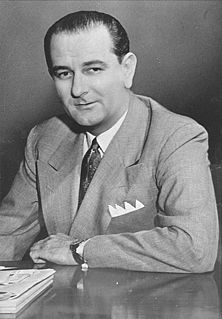
The 1956 United States Senate elections were elections for the United States Senate that coincided with the re-election of President Dwight D. Eisenhower. Although the Democrats gained two seats in regular elections, the Republicans gained back two seats in special elections, leaving the party balance of the chamber remained unchanged.
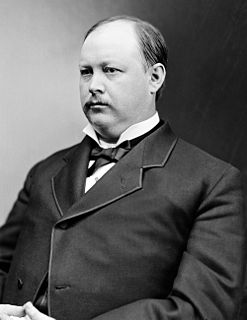
Elections to the United States House of Representatives were held in 1896 for members of the 55th Congress, coinciding with the election of President William McKinley.

Elections to the United States House of Representatives were held in 1876 for Representatives to the 45th Congress. These elections coincided with the election of President Rutherford B. Hayes and the United States Centennial.

Elections to the United States House of Representatives were held in 1864 to elect Representatives to the 39th United States Congress. The election coincided with the presidential election of 1864, in which President Abraham Lincoln was re-elected.
India is a federation with a parliamentary system governed under the Constitution of India, which defines the power distribution between the union, or central, government and the states.
Middlesex County Council was the principal local government body in the administrative county of Middlesex, England from 1889 to 1965.
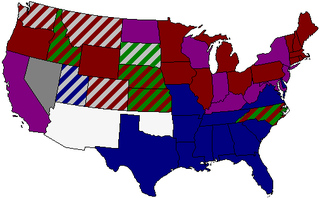
The United States Senate elections of 1896 and 1897 were elections in which the Democratic Party lost seven seats in the United States Senate, mostly to smaller third parties.
The United States Senate elections of 1874 and 1875 had the Democratic Party gain nine seats in the United States Senate from the Republican Party. Republicans remained in the majority, however.
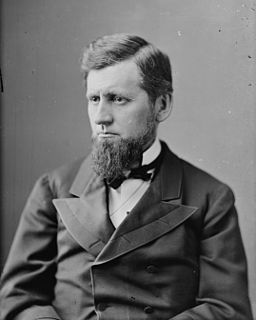
The United States Senate elections of 1900 and 1901 were elections in which the Democratic Party gained two seats in the United States Senate, and which corresponded with President William McKinley's landslide re-election. By the beginning of the next Congress, however, the Republicans gained five additional seats, giving them a ten-seat majority.
In the United States Senate elections of 1828 and 1829, the Jacksonian coalition, despite its leader's victory in the presidential election, lost a seat in the Senate to the opposing Anti-Jacksonian coalition.



